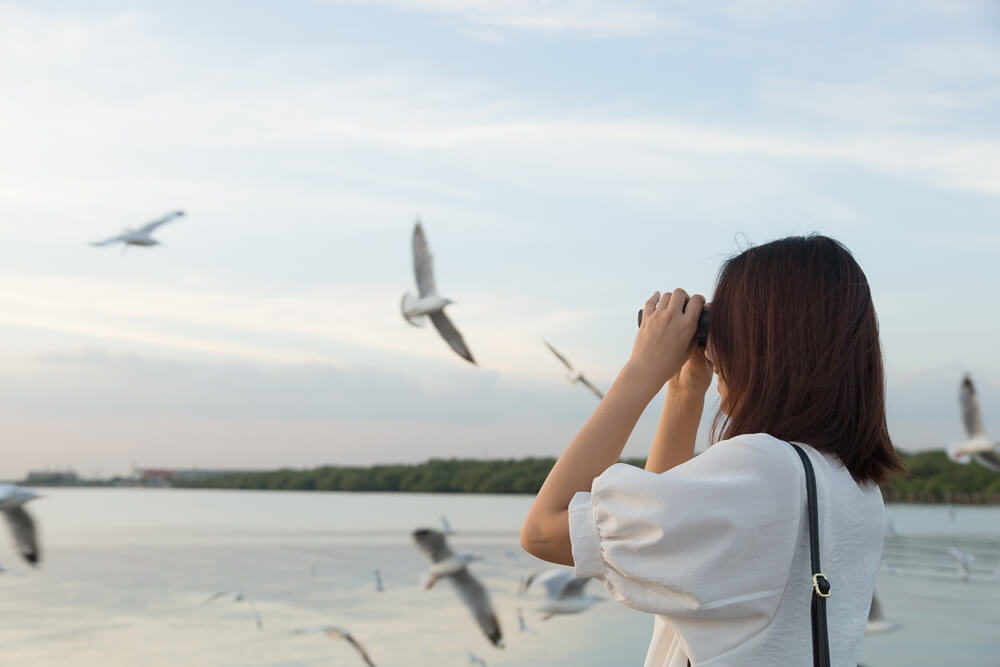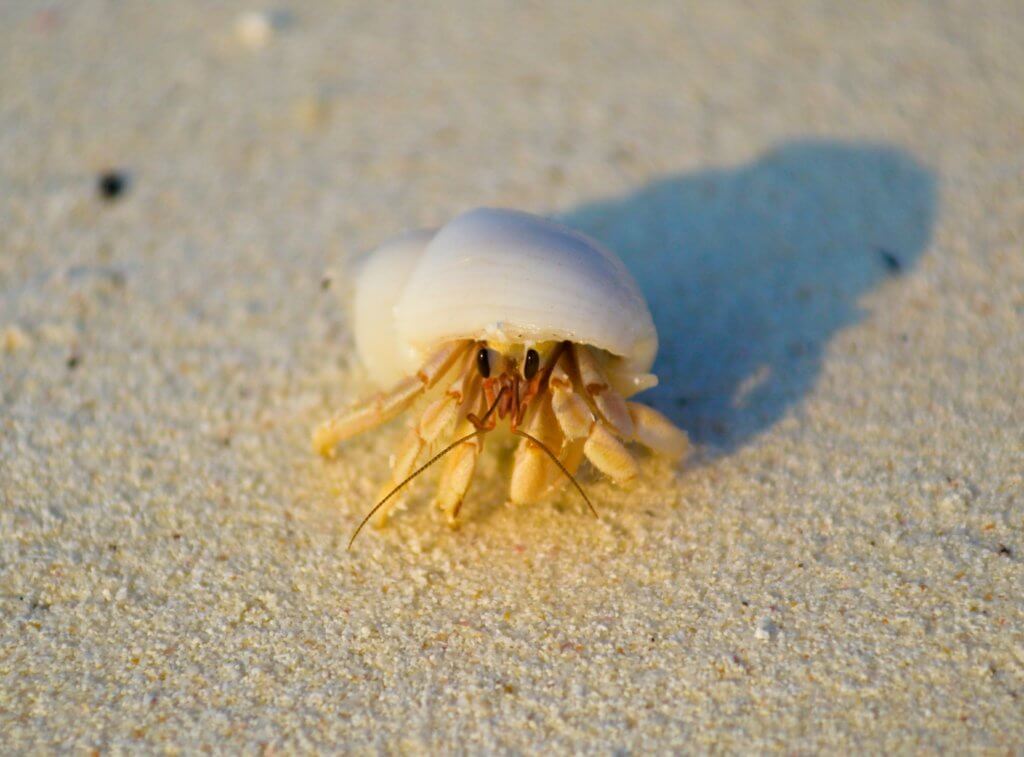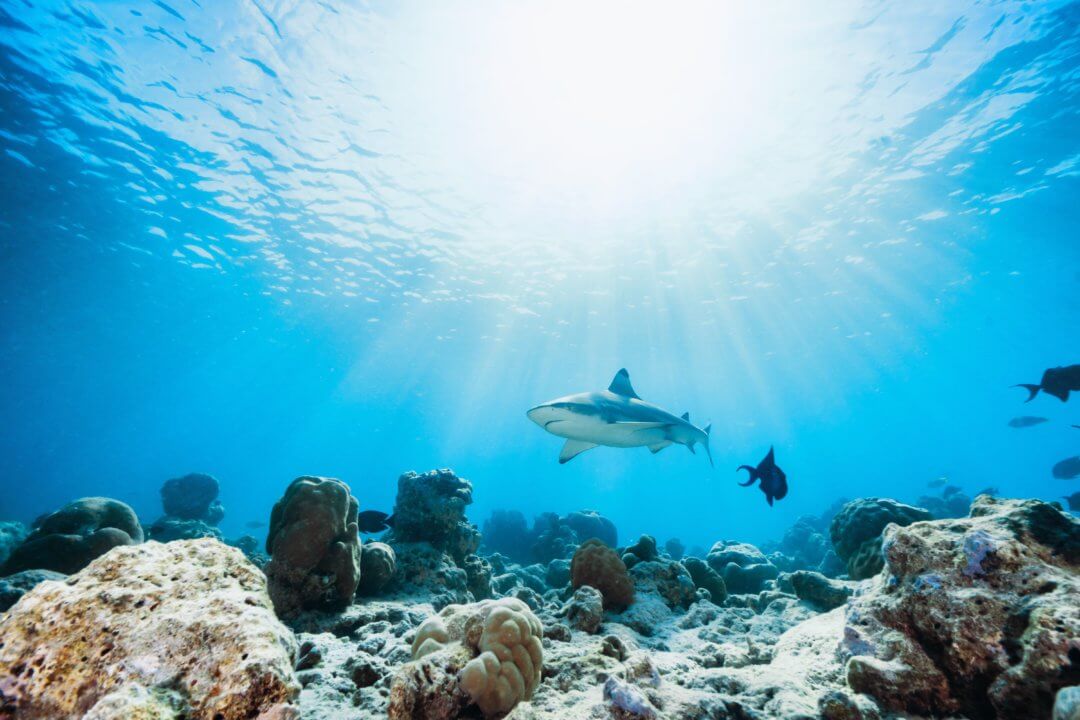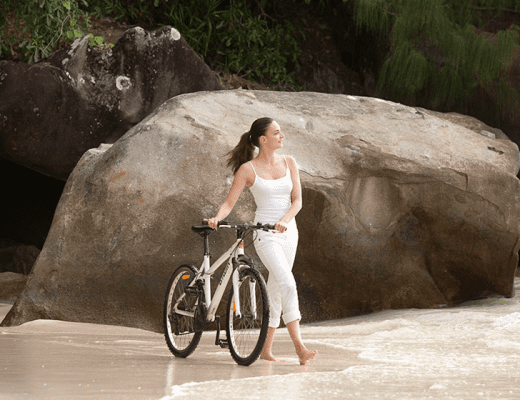At Constance Halaveli we are proud to be surrounded by a beautiful and healthy environment, from tropical wildlife to exotic underwater creatures there is so much to discover amongst the untouched beauty in the Maldives.
In this blog, we provide you with an introduction to all the wonderful natural elements that our tranquil island has to offer and also in our Wildlife nature guide available upon check-in.
Beautiful Birds
There is only a small selection of birds that live at Constance Halaveli, but their beauty and fun nature don’t go amiss. They have distinctive personalities and can be found in different areas of the resort.
Brown Noddy
These beautiful dark brown birds appear during the daylight flying over the ocean searching for schools of small fish and squid. While doing so, they guide fishermen to where the fish can be found.
Brown Noddies are colonial resting in large groups in coasted trees and can be found gliding through the bright blue sky.
Indian House Crow
This is one of the most common birds in the Maldives, known for being clever and mischievous.
With their long strong beaks, they can eat anything from meat to fish and fruit. Their vocal calls can be heard for miles. Have you heard them during your stay?
One interesting fact about the Indian House Crow is that both male and female looks the same and can’t be differentiated.
Black-Naped Tern
This elegant tern spends most of its day by the sea however when they ‘roost’ they retreat to quiet protected sections of the beach. They are relatively shy birds and when you approach they call out to other birds as a warning to others. When they find food, they fly really low over the surface of the water dipping their beaks to catch fish.
An amazing sight to behold is watching them during a feeding frenzy where they participate in short shallow dives in unison.

White-Breasted Waterhen
These shy birds with slender bodies hide deep in the undergrowth for protection, so keep your eyes peeled.
If you want to spot white-breasted waterhen then you need to look out during the early morning and late afternoon when they are most active.
Find them foraging for insects, seeds or small snails and their breeding season is during the months of June-October.
Have you ever heard of Birding ?
Birding or bird watching has fast become a popular hobby for those of all ages.
Simply put it is the observation of birds. With their majestic wings that soar through the sky and their fascinating characteristics, there is no wonder people can stare at them and never cease to get bored.
And what better place to bird watch than in paradise at Constance Halaveli. If you are new to bird watching, here are some useful tips for you to follow next time you are at Constance Halaveli:
- Start bird watching at either the start or the very end of the day, this way you can see them feeding.
- Don’t just focus on looking out for the birds, listen for their calls.
- More often you will hear a bird before seeing it, and the more experienced you get at bird watching the more likely you will recognise a bird with a call.
- Have a physical guide for you when bird watching. This will be useful for referencing what a bird is if you are unsure.
- An important piece of advice is to leave nests alone, observe from afar rather than disrupting their home.
- Don’t just look in the sky, look inland too.
Often birds can surprise you where they pop up, so don’t just point your binoculars at the sky look at the whole parameter that surrounds you. Birds are a beautiful species, so enjoy every moment and write down what birds you spot.

Small Island Residents
Don’t forget to look out for the small residents you can find amongst the foliage and on the sandy paths. You will be surprised at the vast amount of life that lives below the eye line.
Ghost Crab
These small creatures are called ghost crabs for their pale colouring that camouflages into the neutral sand. Watch out though, these crabs can travel up to 10mph and hide in burrows during the day to shield themselves from the hot sun.
An amazing fact about these creatures is that their vision is outstanding and they can see 360 degrees which is an excellent characteristic helping them thrive in the wildlife.

Variable Lizard Almond
These lizards belong to a group called dragon lizards due to their shape and structure. Their long elegant tails are crucial for their balance as they scurry at trees for refuge.
These stunning lizards can be found on the sand at the base of coconut palms so look out for these beautiful specimens.
Indian Fruit Bats
Fruit bats are one of the largest bats in the world with a great wingspan of 1.5m which is a sight to behold.
Indian fruit bats are nocturnal spending the days hanging out in large groups and when dusk approaches they leave their roost searching for food amongst the wildlife.
If you saw one you would be amazed to know that they travel on average a great 65km during the night.
Mesmerising Marine Life
Whiptail Ray
This beautiful ray has an exceptionally long whip tail that is more than twice the length of its body which is excellent for manoeuvring.
Amazingly rays find their food by detecting the weak electric currents that are emitted by all animals. These mesmerising marine rays can be found eating crabs and worms that live under the sand.
If you are staying at Constance Halaveli with children, this is a great opportunity for them to learn all about these interesting marine creatures.
Here are few interesting tips they would find fascinating :
- Stingrays are closely related to sharks and belong to a group of fish called Elasmobranchs.
- They are ovoviviparous which means that their young are hatched from eggs that are held within the body.
- There are a range of different types of rays, these include: stingrays, electric rays, butterfly rays, round rays, manta rays, guitarfish.
- Stingrays protect themselves with venomous spines located in their tail.
- For food, they eat crustaceans, small fish, snails, clams and shrimps.

Black Tip Reef Shark
These small reef sharks are some of the most common sharks in the Maldives. They are often found patrolling the shallow waters often with their fin sticking up over the water rounding up schools of fish.
When sharks decide to attack they dash into the midst of the fish causing a frenzy that lasts a matter of seconds
Want to discover more about this breathing shark? Below are out tip five facts:
- Blacktip reef sharks can grow up to 7 feet long and their average length is just over a 5 feet.
- Instead of creating eggs they produce live pups instead. On average they give birth up to 10 pups each year.
- Sharks are usually deemed as being scary but infact they are often come across as shy which can make it difficult to get a clear vision on them while diving into the deep ocean.
- For food, they usualy opt for small fishes instead of larger marine animals. An example of a type of fish they eat are wrasses.
- The name blacktip is named after their black tips on its fins.
Don’t fear, these beautiful creates will leave you in awe…
Giant Jack
These large fast fish are sleek and streamlined and designed for speed. When they want to swim quickly they lower their fins to reduce drag and they travel into the abyss at up to 45mph. This amazing breed of fish has an amazing vision with specifically designed eyes that give them a panoramic view of their surroundings meaning they don’t need to turn their body.
What is your favourite creature and what interests you most about wildlife?
Tell us in the comments below.
Or why not give another blog a read and find out how you can leave your environmental footprint behind and protect our wildlife.
Feel free to reach out via our social channels and share your photos with the hashtag #MyConstanceMoment
Hope for sunnier days with #ConstanceWithU
Facebook: facebook.com/constancehotels
Instagram: Instagram.com/constancehotels
Twitter: twitter.com/constancehotels




No Comments